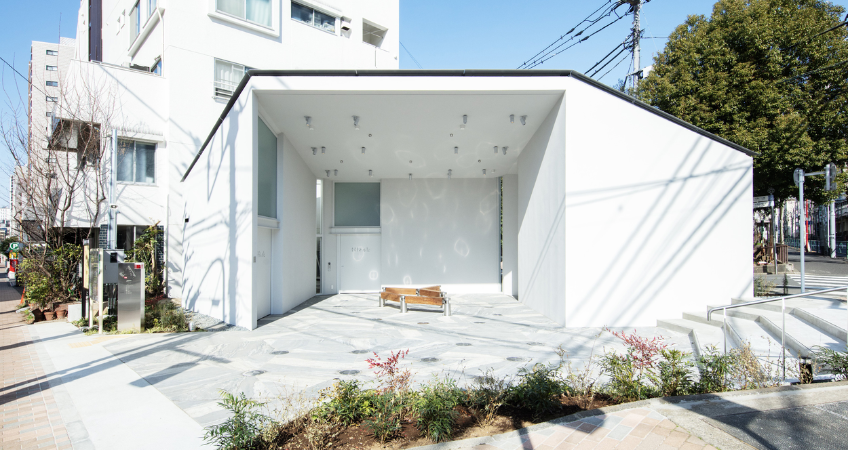
“The Tokyo Toilet” by Miles Pennington
The Tokyo Toilet : What if public toilets could be a symbol of good design and care for the community? – A Thought to Think About from Designer Miles Pennington
In the heart of Tokyo’s quiet Hatagaya district, a bold new interpretation of public infrastructure is changing the way people think about toilets. Part of The Tokyo Toilet project, this particular facility stands out not only for its creative layout, but also for the innovative conception behind it.
Designed by Miles Pennington and the DLX Design Lab at the University of Tokyo, the Hatagaya project challenges the idea that toilets should be hidden away and overlooked. Instead, it invites people to engage, gather, and experience a renewed sense of community in the most unexpected of places, especially public toilets. The Hatagaya isn’t just a restroom; it’s a vibrant public stage, an information kiosk, and a social hangout—enhancing the surrounding neighborhood.
The Design Behind Hatagaya




Overall design of the Hatagaya project
All images in this article are sourced from The Tokyo Toilet project, © Shibuya City / The Nippon Foundation
At first glance, the Hatagaya toilet doesn’t even look like a typical public restroom. The most eye-catching part of the design is a tall, slanted roof that stretches over the open space in the middle, giving the area a sense of openness and comfort.
The actual toilets are placed in three small, triangle-shaped buildings around the sides. This layout gives people privacy when they use the restroom, but still keeps the space feeling open and welcoming. One clever feature is the use of short metal posts, known as bollards, which can be turned into benches by placing wooden planks across them. This means the space can be changed and arranged in different ways—like a circle for group chats or rows for watching a movie or performance.
The building is also painted in a clean white vibe, making it feel fresh and bright. At the same time, it blends in nicely with the rest of the neighborhood. This central space isn’t just for walking through—it’s a smart mix of simplicity and creativity that invites people to step in and spend time there.
Inclusivity and Accessibility



How the toilets looks like from within in the Hatagaya project
All images in this article are sourced from The Tokyo Toilet project, © Shibuya City / The Nippon Foundation
True to the mission of The Tokyo Toilet project, the Hatagaya facility emphasizes inclusivity in both form and function. Inside, the toilets are gender-neutral and equipped with features that accommodate a wide range of users. There are ostomate-friendly functions (for users with medical needs), baby chairs, fold-down changing boards, and even luggage racks.
In a thoughtful nod to Japanese culture, the interior also allows for shoes to be removed cleanly and comfortably—creating a hygienic, respectful experience that aligns with local values. It is a small touch, but one that shows just how human-centered the design truly is.
Designed With—and For—the Community

Image Credit : Copyright © Shibuya City / The Nippon Foundation
The development of the Hatagaya toilet involved the local community, even from the initial planning stage. Miles Pennington and his team conducted workshops with local residents, shop owners, and city officials to better understand the area’s specific requirements and needs. This collaborative process helped shape the multi-use central space and influenced how the toilet would interact with its surroundings.
Up until today, the facility is maintained to the highest standards. Its longevity is part of the plan, ensuring that the investment in design remains a gift to the public—not a temporary showpiece.
What This Means for Public Design
The Hatagaya toilet challenges assumptions about what public infrastructure can—and should be. It tells us that toilets shouldn’t have to be hidden away in corners or tucked away in back alleys. With the right vision, even the most utilitarian of spaces can become places for design and connection.
This project is not just a bathroom renovation—it’s a powerful statement about urban living. It reminds us that thoughtful design can improve everyday life, even in the most ordinary of places.
Disclaimer: This article includes references to publicly available information and images from The Tokyo Toilet project — an initiative by the Nippon Foundation and Shibuya City. To explore all unique toilet designs and learn more about the initiative, please visit the official website : https://tokyotoilet.jp/en/
